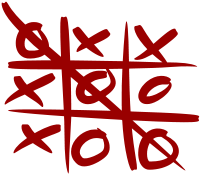Which is Better? Deciding between two options with slightly asymmetrical criteria.
Posted: August 12, 2017 Filed under: Uncategorized | Tags: Decisions, Game Leave a comment Set-up your choice box like Tic-Tac-Toe
Set-up your choice box like Tic-Tac-Toe
Let’s say that you want to make a choice. The choice is not like “Tapioca or chocolate pudding?” which is a choice between two options that relies on one factor, taste. Let’s say that the choice is from among a variety of options, and you need to rate them on two criteria. How do you do that?
For decisions such as this, you can use a quick tic-tac-toe grid.
This Game is played on two axes.
You can use a 9-box grid, like the one below, where I rate BBC America shows in 2016-2017. I chose 5 different shows to rate, and I placed them according to their reference on the two axes. The left axis (vertical) is Story, and the bottom axis (across) is Character. For each show, I ask two questions:
- What is my preference for this show relative to Characters?
- What is my preference for this show relative to Story?
As you can see, Sherlock, I believe is the best in both Story and Character. My second would be Broadchurch (box 8). There is a little bit of a bias in play since I value Character a higher than Story, I placed that in the Bottom axis. The box numbering from 1 to 9 reflects that small but significant preference.
Know your bias to Win at making decisions.
This is a very common tool that can be found in when we prioritize task as Urgent and Important. We can also use it in a Benefit and Effort matrix. In both of these, there is advice that says that one category or criteria is a little more important than the other (see the links below).
I use this tool to help me understand my biases, and to know if I want those biases to exist. So, above, I must ask, “Do I really value Character more than Story in my BBC America shows?” In another real case, I understand that Tapioca will win all the time against any other flavor, because I believe it is just that good (The Big Bang Theory agrees with me).
Rule Books
- Excel Sheet example
- Google Sheets example
- Eisenhower’s Urgent / Important Principle at Mindtools.com
- The Action Priority Matrix at Mindtools.com